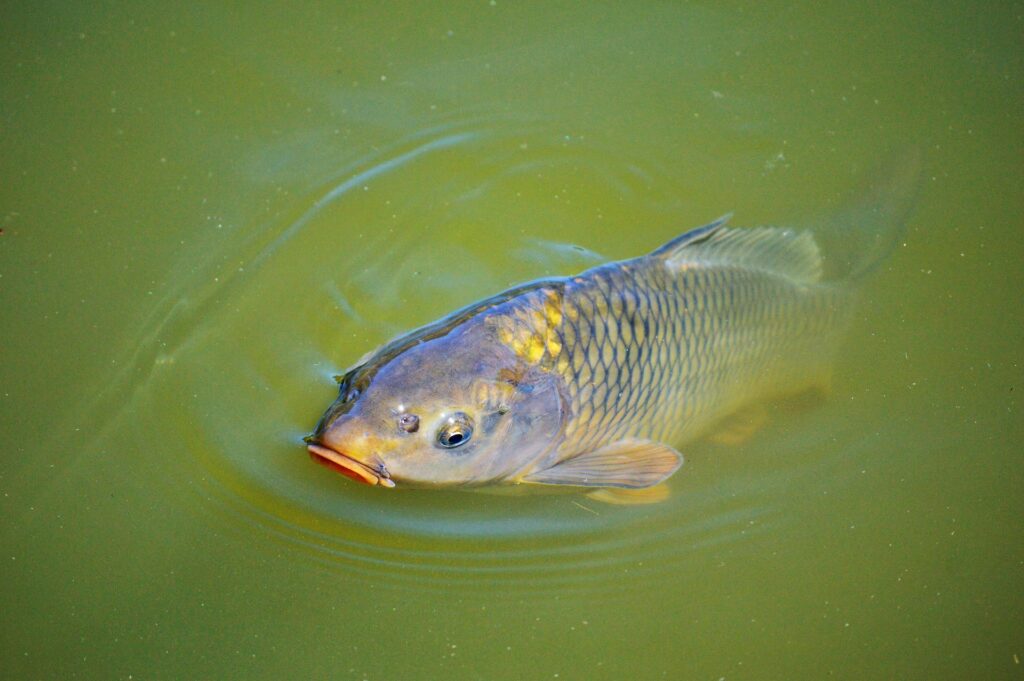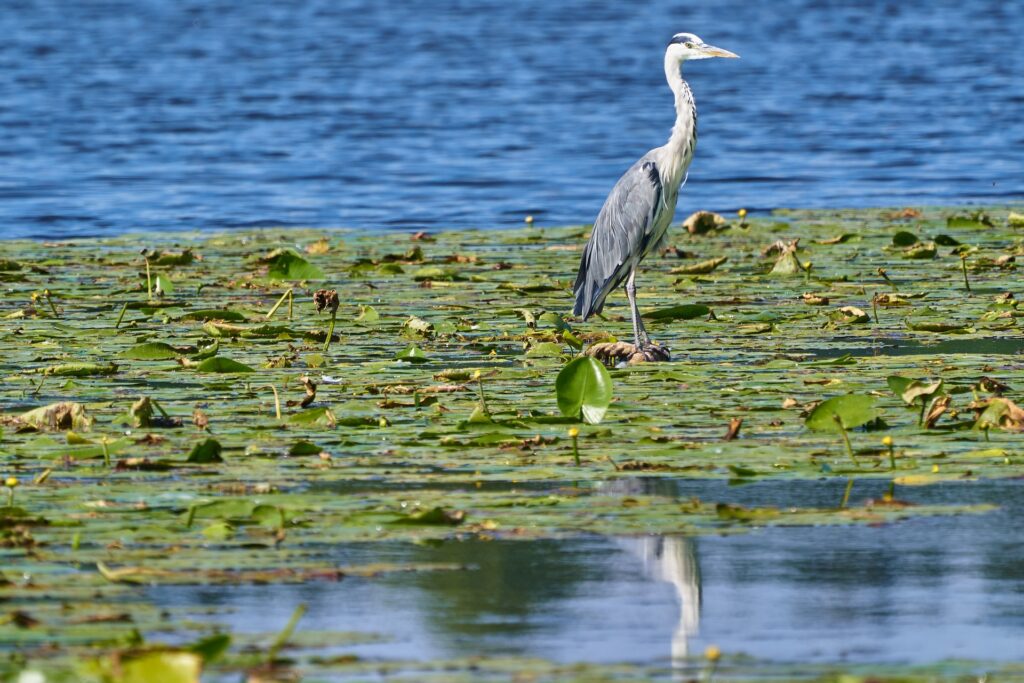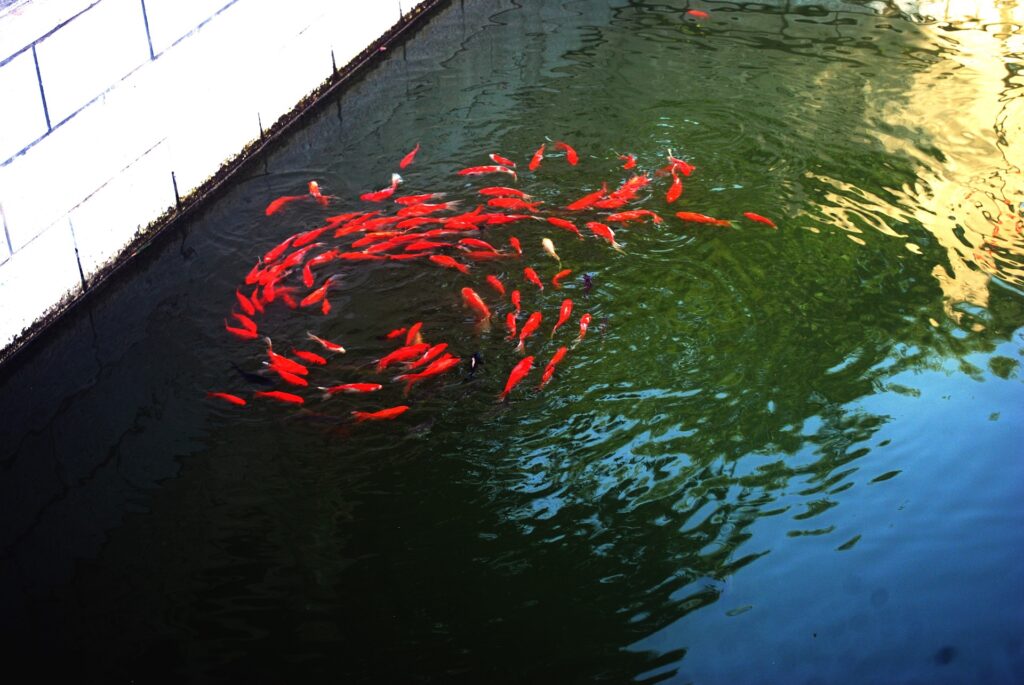Imagine you have just built a beautiful pond in your backyard, eager to fill it with vibrant and lively fish. The question arises: can you put fish straight into a pond? Before you take the plunge, let’s explore the factors you need to consider to ensure a successful and thriving aquatic environment.
From water quality to acclimation techniques, this article will provide you with all the necessary guidance to make your pond a paradise for your finned friends.
Factors to Consider
When considering adding fish to your pond, there are several important factors to take into account. These factors will impact the health and success of your fish, as well as the overall ecosystem of your pond.
Water Quality
Ensuring good water quality is crucial for the well-being of your fish. Before introducing any fish to your pond, you should carefully test the water to assess its pH levels, ammonia and nitrate levels, and overall clarity. Fish are sensitive to changes in water quality, so it’s important to maintain a stable and suitable environment for them to thrive.
Size of the Pond
The size of your pond will determine the number and types of fish that can be accommodated. It’s important to have enough space for the fish to swim and thrive without feeling overcrowded. Overcrowding can lead to stress, disease, and poor water quality. Consider the size of your pond and choose fish species that are appropriate for the space available.
Type of Fish
The type of fish you choose for your pond is another important factor to consider. Different species have different requirements in terms of water temperature, pH levels, and habitat. Some fish may prefer cooler water, while others thrive in warmer temperatures. Research the specific needs of the fish species you are interested in and ensure they are compatible with the conditions of your pond.
Season
The time of year you choose to introduce fish to your pond can also impact their success. It’s generally recommended to introduce fish in the spring, when water temperatures are rising and the fish have ample time to acclimate to their new environment before winter. Introducing fish during extreme temperature conditions, such as during the hot summer or freezing winter, can put undue stress on them and increase the likelihood of complications.
Fish Health
Before introducing fish to your pond, it’s important to ensure they are healthy. Choose fish from reputable sources and visually inspect them for any signs of disease or injury. Sick fish can introduce pathogens and cause health issues for the other fish in your pond. Quarantine new fish in a separate tank for a couple of weeks to monitor their health and prevent the spread of potential diseases.

Preparing the Pond
Properly preparing your pond before adding fish is essential for creating a healthy and thriving aquatic environment. Taking the following steps will help set the stage for success.
Pond Cleaning
Before introducing fish, it’s important to clean your pond thoroughly. Remove any debris, such as leaves, algae, and excess dirt, from the bottom of the pond. This will help improve water quality and prevent the accumulation of harmful bacteria. A clean pond will provide a better habitat for your fish and reduce the chance of disease outbreaks.
Aeration and Filtration
Installing aeration and filtration systems in your pond is crucial for maintaining good water quality. Aeration helps increase the oxygen levels in the water, which is essential for fish respiration. Filtration systems remove excess waste and debris from the water, preventing it from becoming stagnant and improving water quality. These systems work together to create a healthy and balanced ecosystem for your fish.
Establishing Beneficial Bacteria
Introducing beneficial bacteria to your pond is an important step in preparing the ecosystem for fish. Beneficial bacteria help break down organic matter and fish waste, reducing the levels of ammonia and nitrate in the water. These bacteria create a natural balance and reduce the risk of poor water quality and harmful algal blooms. Consider using a bacterial supplement specifically designed for pond use.
Adding Plants
Plants not only add beauty to your pond, but they also play a vital role in maintaining water quality. Aquatic plants, such as water lilies and submerged plants, help absorb excess nutrients and provide shade and shelter for fish. These plants also help oxygenate the water through photosynthesis, creating a healthier environment for your fish. Make sure to choose plants that are suitable for your pond’s depth and conditions.

Acclimating the Fish
Once your pond is prepared, it’s time to introduce your fish. Proper acclimation is crucial to minimize stress and ensure a smooth transition for the fish.
Temperature Adjustment
Before releasing the fish into the pond, it’s important to acclimate them to the water temperature. Fish are sensitive to sudden temperature changes, so it’s best to gradually adjust their environment. Float the plastic bag containing the fish in the pond for around 15 minutes, allowing the water temperature inside the bag to slowly equalize with that of the pond.
Drip Method
The drip method is an effective way to acclimate fish to the pond water. Place the fish in a container and suspend it above the pond. Use a tube to drip pond water into the container, slowly introducing the fish to the pond’s water chemistry. This method allows the fish to adjust to changes in pH and other water parameters gradually.
Floatation Method
Another popular acclimation method is the floatation method. Float the fish, still in the bag, on the surface of the pond water for about 15-30 minutes. This allows the temperature of the water inside the bag to slowly equalize with the pond’s temperature. After the allotted time, gently release the fish into the pond, allowing it to swim out of the bag on its own.
Release into Pond
Once the fish have been properly acclimated, it’s time to release them into the pond. Open the bag or container and gently guide the fish into the water. Avoid dumping or splashing them, as this can cause unnecessary stress. Allow the fish to swim out at their own pace and observe them closely for any signs of distress.

Monitoring and Maintenance
After introducing fish to your pond, regular monitoring and maintenance are necessary to ensure their continued health and well-being.
Water Testing
Regularly testing the water parameters of your pond is essential for maintaining good water quality. Test the pH, ammonia, nitrate, and nitrite levels regularly to ensure they remain within the appropriate range for your fish species. Sudden changes in water chemistry can be harmful to fish, so monitoring these levels regularly allows for timely adjustments and preventative action.
Feeding Routine
Establishing a regular feeding routine is important for maintaining the health of your fish. Feed your fish a diet that is suitable for their species and avoid overfeeding, as excess food can lead to poor water quality and fish health issues. Feed your fish the appropriate amount of food based on their size and check for uneaten food after feeding to prevent it from decomposing and affecting water quality.
Predator Control
Predators can pose a threat to your fish, especially if your pond is not properly protected. Consider installing netting or fencing around your pond to prevent birds, raccoons, and other animals from accessing the fish. Additionally, provide hiding places, such as rocks or plants, for your fish to seek shelter from potential predators.
Pond Cleaning Schedule
Maintaining a regular pond cleaning schedule is important for the long-term health of your fish and the overall ecosystem. Remove any excess debris, such as fallen leaves or algae, from the pond regularly to prevent their accumulation and the associated water quality issues. Consider scheduling monthly or quarterly cleanings, depending on the size and needs of your pond.

Common Mistakes
Avoiding common mistakes will help ensure the success and longevity of your fish and pond ecosystem.
Adding Too Many Fish
One common mistake is adding too many fish to your pond. Overcrowding can lead to stress, disease outbreaks, and poor water quality. Follow recommended stocking guidelines and consider the adult size of the fish when determining the appropriate number for your pond. A good rule of thumb is to avoid overcrowding and allow room for the fish to grow and thrive.
Neglecting Water Quality
Neglecting water quality is another common mistake. Poor water quality can have detrimental effects on fish health and overall pond ecosystem. Regularly test the water parameters and address any imbalances promptly. Maintaining a proper balance of ammonia, nitrate, and pH levels will help ensure the overall health and happiness of your fish.
Overfeeding the Fish
Overfeeding fish is a common mistake that can lead to various problems. Excess food not only pollutes the water but also contributes to the excessive growth of algae, which can deplete oxygen levels in the pond. Follow the recommended feeding guidelines for your fish species and remove any uneaten food after feeding to prevent water quality issues.
Lack of Proper Maintenance
Neglecting proper maintenance is a common mistake that can lead to a host of issues. Regular cleaning and maintenance are necessary for a healthy pond environment. Establish a maintenance schedule that includes tasks such as debris removal, water testing, and filter maintenance. Regularly monitor the health and behavior of your fish to detect any potential problems early on.
Can You Put Fish Straight Into A Pond
By considering these factors, preparing your pond, acclimating the fish properly, and maintaining regular monitoring and maintenance, you can create a thriving and healthy pond ecosystem for your fish to enjoy. With proper care and attention, you’ll be able to sit back and watch your fish flourish in their new home.
We hope we covered everything and you are all set to move on and build your fish pond. If you need more, take a look at ‘What Are The Basics Of A Fishpond‘.
